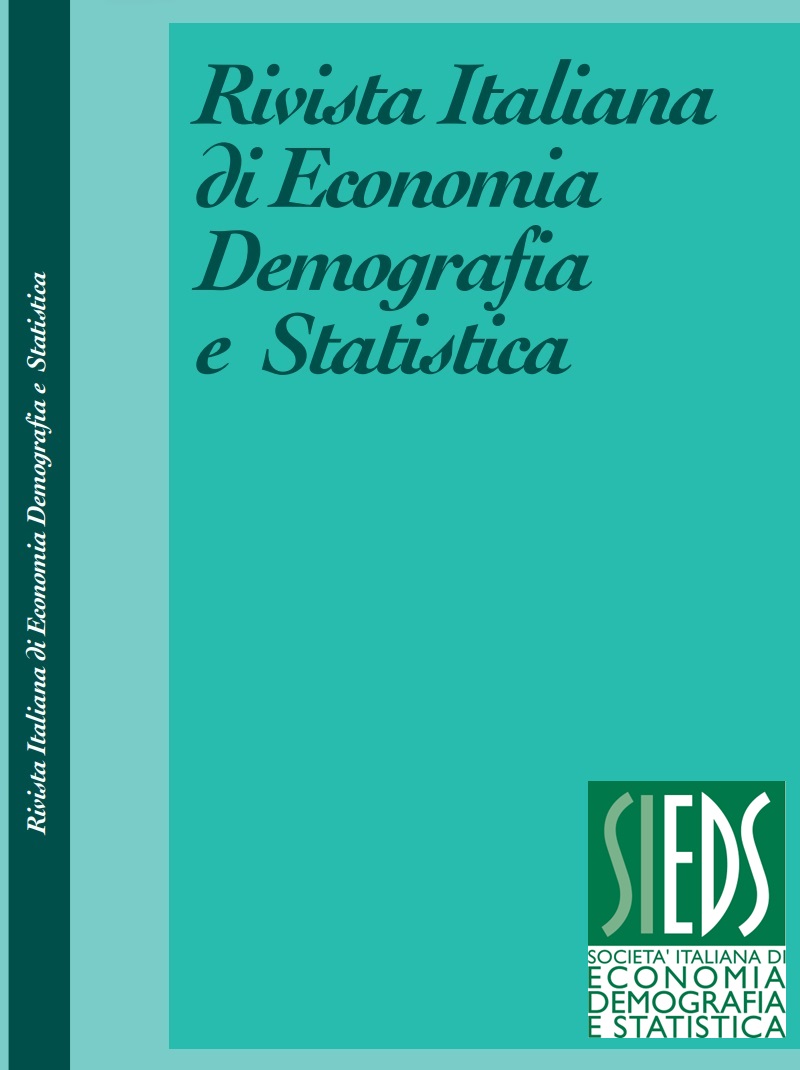Estimation models used in 2021 Permanent Population Census: Current activity status, Occupation, Industry and Status in employment.
DOI:
https://doi.org/10.71014/sieds.v78i3.359Abstract
Every year, Istat is involved in Census estimates production, which is obtained by integrating sample data with information from administrative sources. As regards the production of labour estimates, Istat produces Current activity status estimates for Italian dissemination. In 2023, in addition to these estimates, to comply with EU regulations, referred to the year 2021, estimates for Occupation, Industry and Status in employment were also produced. The estimation process for Employed/Not Employed is already well documented. For this reason, the procedure for estimating the Unemployed and Outside the labour force (students, retired people, housewives, other) and the variables related to Occupation, Industry and Status in employment will be here described. The estimates of these variables were produced at municipal level. The estimation models were implemented in R software through the ‘multinom’ function included in the ‘nnet’ package which allows to fit multinomial log-linear models using neural networks. The article aims to describe the different estimation models and the procedures used for choosing and defining the auxiliary variables included in the models. The administrative sources used were mainly social welfare and income sources and they allowed to identify ‘work signs’ of each individual.
References
AGRESTI A. 2013. Categorical data analysis (3rd edition). John Wiley& Sons, Hoboken NJ.
AKAIKE H. 1973. Information theory and an extension of the maximum likelihood principle. In Proceedings of the 2nd International Symposium on Information Theory, Budapest: Petrov, B.N., Csáki, F. (eds) Akadémia Kiadó, pp. 267–281.
ALLEVA G., PETRARCA F., FALORSI P. D., RIGHI P. 2021. Measuring the Accuracy of Aggregates Computed from a Statistical Register. Journal of Official Statistics, Vol. 37, No. 2, pp. 481-503. DOI: https://doi.org/10.2478/jos-2021-0021
BOESCHOTEN L., FILIPPONI D., VARRIALE R. 2021. Combining multiple imputation and hidden markov modelling to obtain consistent estimates of employment status. Journal of Survey Statistics and Methodology, Vol. 9, No.3, pp. 549–573. DOI: https://doi.org/10.1093/jssam/smz052
BREIMAN L., FRIEDMAN J., OLSHEN R., STONE C. 1984. Classification and Regression Trees, Wadsworth and Brooks, Monterey CA.
BROGI F., CICCAGLIONI C., FALORSI S., FASULO A., QUONDAMSTEFANO V., SOLARI F. 2018. Preliminary experimental: results on the Italian Population and Housing Census estimation methods. In Proceedings of Twentieth Meeting of UNECE Group of Experts on Population and Housing Censuses, Geneva.
CHIANELLA D., DELIU N., DI ZIO M., FALORSI P.D., FALORSI S., ROCCI F., SIMEONI G. 2024. Process and output quality evaluation measures for Istat
Integrated System of Statistical Registers. In Proceedings of the Seventh International Conference on Establishment Statistics (ICES VII), Glasgow.
D’ALO’ M., FALORSI S., FASULO A., SOLARI F. 2017. Estimation strategies combining different sources of data. In Proceedings of 61st World Statistics Congress ISI 2017, Marrakech. DOI: https://doi.org/10.1515/jos-2017-0004
Downloads
Published
Issue
Section
License
Copyright (c) 2024 DIEGO CHIANELLA, CAROLINA CICCAGLIONI, DARIO ERCOLANI

This work is licensed under a Creative Commons Attribution 4.0 International License.



